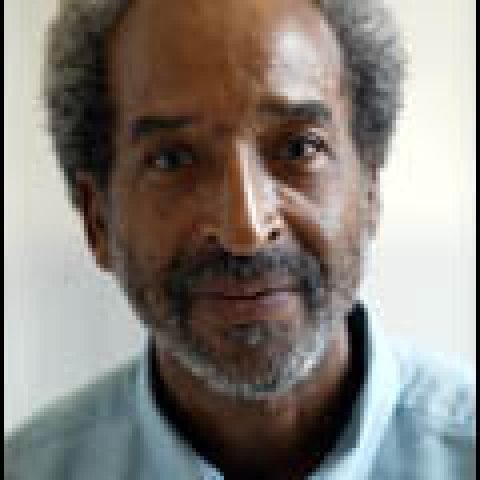Raymond Gavins
Fellow
Professional Affiliation
Professor of History, Duke University; Project Director, "Behind the Veil: Documenting African American Life in the Jim Crow South," Center for Documentary Studies
Expert Bio
I teach modern American and Afro-American history at Duke University, along with documenting and explaining black experiences of segregation. My scholarly interests began forming in 1963, when I received the first Rayford W. Logan Historical Prize (an all-expense scholarship) at Virginia Union University. During freshman year I had joined student sit-ins and pickets in downtown Richmond, plus campus vigils on the Prince Edward County, Virginia school closing. Defying court-ordered integration, the county closed its schools from 1959 to 1964. As a sophomore I took Negro History, reading From Slavery to Freedom: A History of American Negroes (2d ed., 1956) by John Hope Franklin. Such influences moved me to join efforts for Afro-American Studies at the University of Virginia and to pursue the study of southern black leadership. I enriched my research as an associate of the Duke Oral History Program (1972-86), exploring 1890s disfranchisement and local civil rights, and as a "Behind the Veil" Project director. In addition to two books, my work is published in 42 articles and book chapters. "Behind the Veil," meantime, has developed an eleven-state archive of documentary and oral sources, including 1,350 life-history narratives. I use the 378 North Carolina narrators (born 1894-1941) as an important source on how African Americans aspired and struggled to be full citizens.Life behind the veil could only mitigate economic injustice, forced illiteracy, or mob violence, as I explain in The Meaning of Freedom. Without government protection and with few powerful white allies, blacks still suffered greatly. Through institution building and group economy, they affirmed and empowered themselves, fighting to "‘secure the blessings of liberty to ourselves and our posterity.'" Their emancipationist outlook, embedded in slave culture, was the wellspring of shared aspirations and protests. Oppressed but hardly monolithic, blacks negotiated class, gender, political, rural, or urban differences to sustain their vision.Freedom became the watchword of every generation. The sharecropper and working-class majority, not the Talented Tenth alone, fought for "the ballot, the book, and the buck." Black newspapers advocated "race progress," creating a language of liberation. Communities promoted self-help and solidarity as well as interracial cooperation and radical organizing. Post-riot black Wilmington pursued both material uplift and protest, chartering its NAACP branch in 1919. School campaigns evolved at the grass roots, as parents and educators related learning to suffrage and empowerment. Teacher associations and teachers were crucial transmitters of egalitarian beliefs and values. Urban black migration, NAACP branches, industrial unions, and women's civic networks forged an antilynching and freedom movement in the Great Depression years. Black churches and colleges quickened the spirit of dissent. North Carolina College in 1942 hosted the southern black leaders who drafted the landmark "Durham Manifesto" opposing Jim Crow. The State Conference of NAACP Branches and NAACP Legal Defense Fund filed suits to equalize and desegregate schools. Moreover, the Conference initiated nonviolent direct action, for example school boycotts in 1946 and 1951 that forecast the 1960 sit-ins. But institutional racism (rooted in Jim Crow) continued in the 1960s despite mass demonstrations and federal civil rights reforms. My book will inform public discussion and policy. Inequality in contemporary North Carolina is linked to Jim Crow's legacy. Citizens of color are more frequently illiterate, poor, and powerless than whites. School resegregation, affirmative action, and black-majority Congressional Districts mirror deep race divisions. Forthcoming conferences and exhibitions to mark the 50th anniversary of Brown v. Board of Education in 2004 will revisit segregated education, which black North Carolinians remember vividly. They also portray the paramount role of the NAACP and other community groups in seeking equality. Public discussions and Congressional hearings on renewal of the Voting Rights Act will benefit from historical findings on North Carolina and the South as well. I look forward to our Work-in-Progress sessions.
Education
B.A. (1964) History, magna cum laude, Virginia Union University; M.A. (1967) and Ph.D. (1970) American History, University of Virginia
Subjects
African-American History,Civil Liberties/Civil Rights
Experience
- Professor of History, Duke University, 1991-present
- Director of Graduate Studies, Department of History, 1995-98
- Project Director, "Behind the Veil," 1991-
present - Associate Professor of History, Duke University, 1976-91
- Assistant Professor of History, Duke University, 1970-76
Expertise
Afro-American and New South history; segregation; civil rights; desegregation
Wilson Center Project
"The Meaning of Freedom: Black North Carolina in the Age of Jim Crow, 1880-1965"
Project Summary
This project recasts North Carolina black life and thought, using the larger frame of regional and national Jim Crow, de jure and de facto. It aims to answer three critical questions. How did African Americans define citizenship in the Jim Crow South? By what means did they seek the promise of the 13th, 14th, and 15th Amendments? What were the processes, breakthroughs, and consequences of their search in the Tar Heel State? Between the end of Reconstruction and the Voting Rights Act of 1965, black North Carolinians (the South's second largest black population by 1960) built institutions and movements to buffer and challenge caste. Their social developments and struggles recast our view of southern black ideology and strategy; white backlash against desegregation; and continuing racial inequality in America.
Major Publications
- Remembering Jim Crow: African Americans Tell About Life in the Segregated South, co-editor (The New Press, 2001)
- "Fear, Hope, and Struggle: Recasting Black North Carolina in the Age of Jim Crow," Democracy Betrayed: The Wilmington Race Riot of 1898 and Its Legacy, (University of North Carolina Press, 1998)
- The Perils and Prospects of Southern Black Leadership: Gordon Blaine Hancock, 1884-1970 (Duke University Press, 1977; 1993)
Insight & Analysis by Raymond Gavins
- Article
Wilson Center Mourns the Loss of Two Former Fellows, Bob Timberg and Ray Gavins

